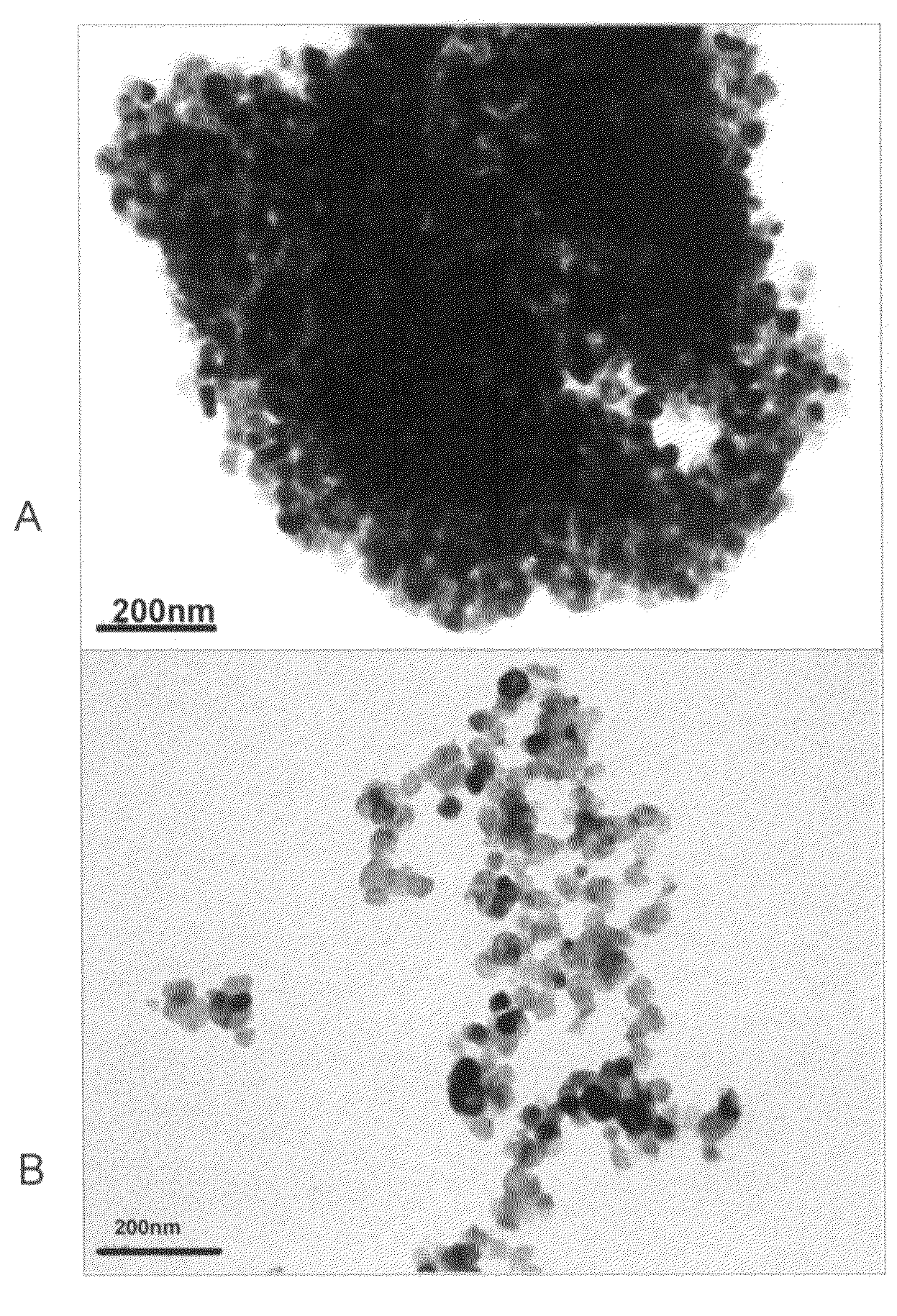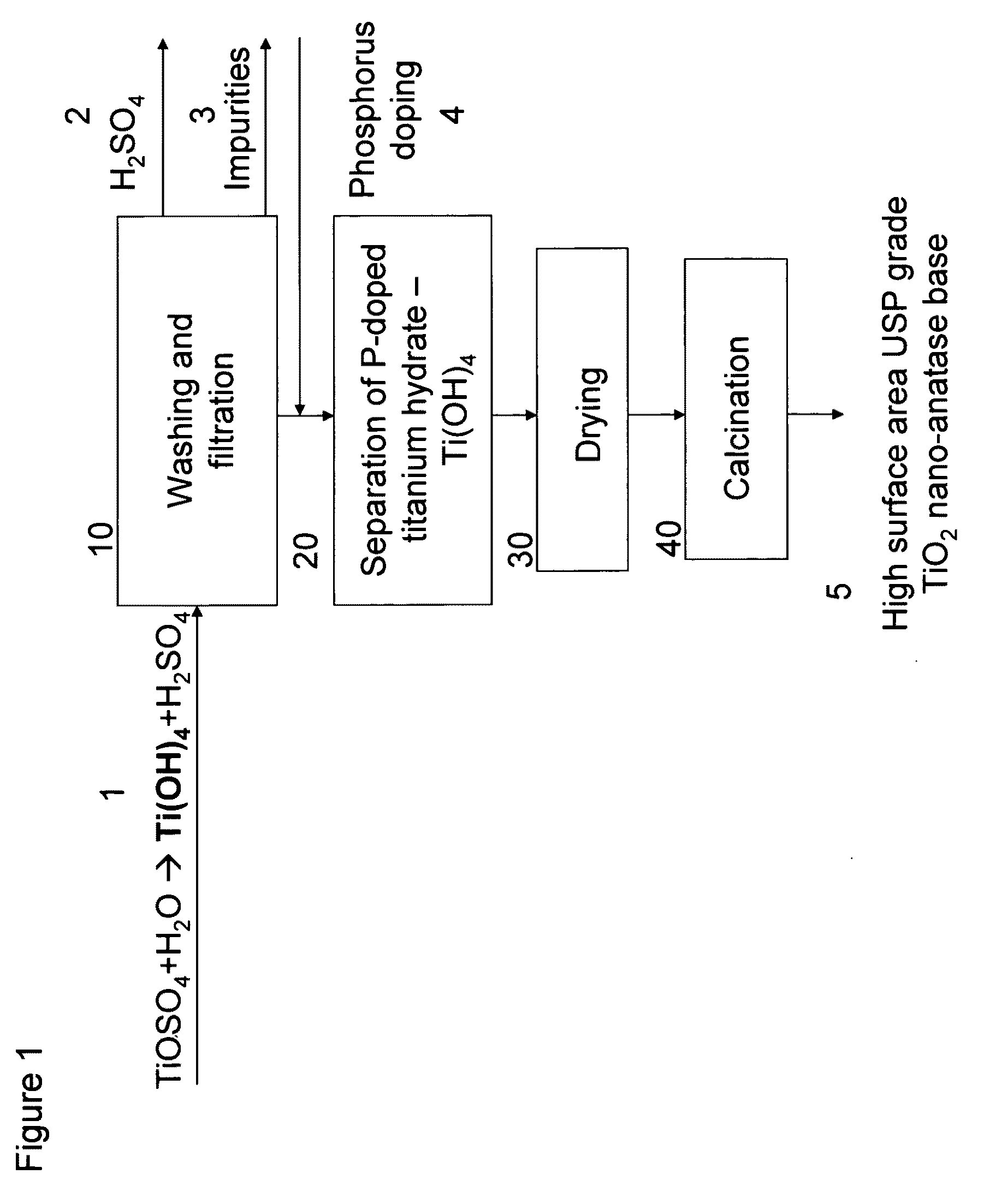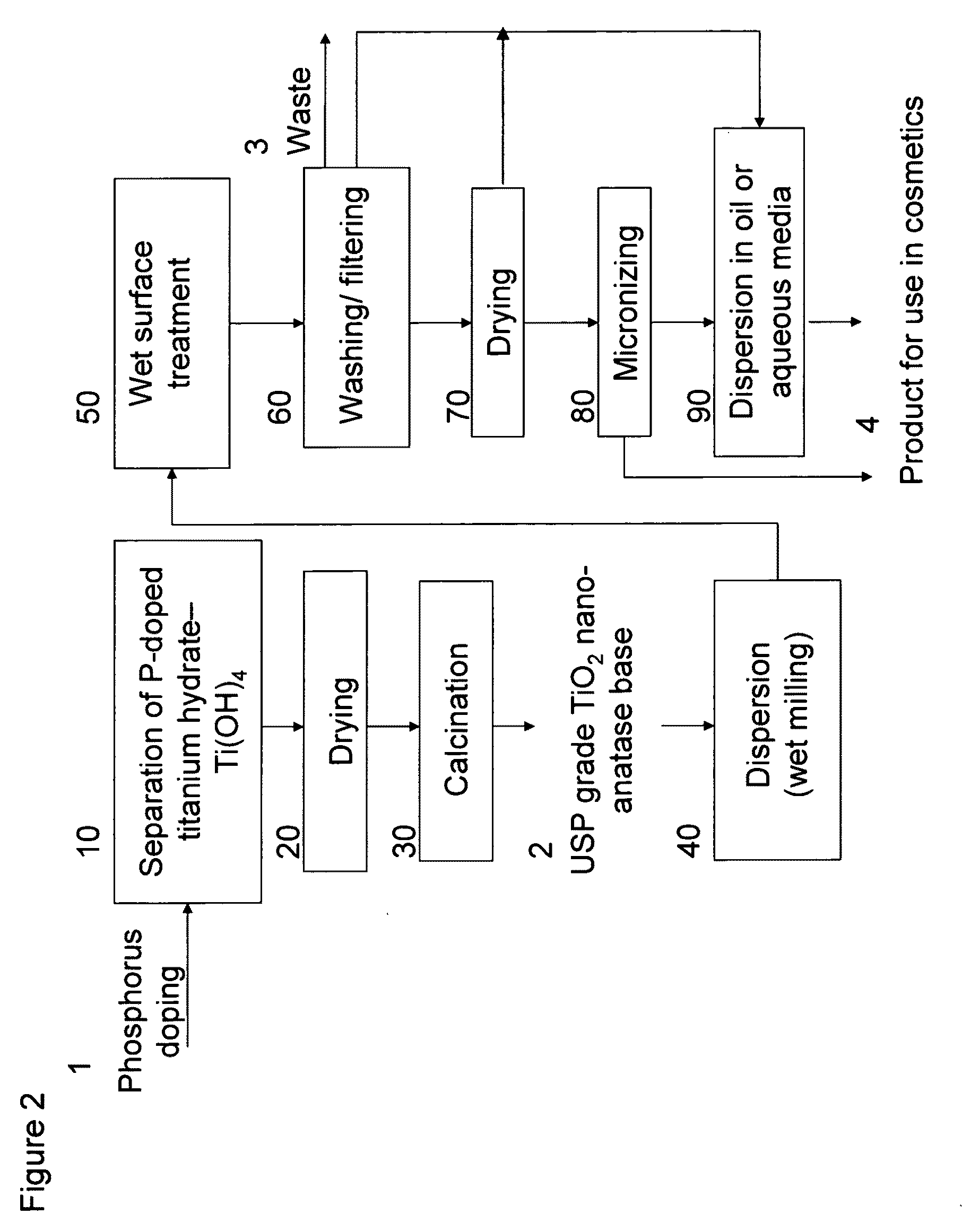Process for manufacturing of high surface area USP grade nano-anatase base
a technology of nano-anatase and high surface area, which is applied in the direction of biocide, inorganic phosphorous active ingredients, applications, etc., can solve the problems of contaminated by a fraction of pigmentary rutile, limited use and thermodynamic instability of anatase and brooki
- Summary
- Abstract
- Description
- Claims
- Application Information
AI Technical Summary
Benefits of technology
Problems solved by technology
Method used
Image
Examples
example 1
[0038]Titanium hydrate paste was treated with 0.1M phosphoric acid to adjust the concentration of phosphorus in the TiO2 material to 0.1 weight percent. The doped paste was mixed well and then dried. The dried intermediate was subsequently calcined at 500, 600, 700 and 800° C. for 10 hours. The calcined samples were analyzed using the required USP procedures. Further the samples were evaluated for the particle size and the particle size distribution to determine suitability of the materials for the sun screens and applications requiring optical transparency. FIG. 3 shows a plot with the results. Importantly, materials with the small particle size did not pass the criteria of the weight loss on ignition at 800° C. Materials meeting the USP specifications were too coarse and heavily sintered into large aggregates to suit the cosmetic applications. There was only a narrow window of the calcination conditions between 725-750° C. at the 10 hour calcination time, producing the USP nano-ba...
example 2
[0039]Titanium hydrate paste was treated with 1M phosphoric acid to adjust concentration of phosphorus in the TiO2 material to 0.45 weight percent. The doped paste was mixed well and dried. The dried intermediate was subsequently calcined at 650, 675, 700, 725, 750, 775, 800 and 850° C. for 10 hours. The calcined samples were analyzed according to the required USP analytical procedures. Further the samples were evaluated for the particle size and the particle size distribution to determine suitability of the materials for sun screen cosmetics and applications requiring optical transparency to the visible light. FIG. 4 shows a plot with the results. The materials all met the USP specifications. The weight loss on ignition at 800° C. (LOI) was less than 1 weight percent for all materials, including the 650° C. sample. The particle size was optimal for use in transparent cosmetics. The 850° C. material is already fused into coarser aggregates. Corresponding SEM pictures of the products...
example 3
[0041]Titanium hydrate paste was treated with diluted phosphoric acid to adjust the concentration of phosphorus to 0.3 weight percent in the TiO2 material. The doped paste was mixed well and then dried. The dried intermediate was subsequently calcined at 500, 600, 700, 725 and 800° C. for 10 hours. The calcined samples were analyzed according to the required USP analytical procedures. Further, the samples were evaluated for the particle size and-particle size distribution to determine suitability of the materials for applications requiring optical transparency to the visible light. Materials calcined above 700° C. all met the USP specifications and their particle size was suitable for their use in cosmetics. Materials calcined at 700° C. and lower did not meet the USP specifications. They did not pass the criteria of the weight loss on the ignition at 800° C. FIG. 6 shows SEM images of materials prepared in 700° C. / 10 hour calcination with different levels of phosphorus after the we...
PUM
 Login to View More
Login to View More Abstract
Description
Claims
Application Information
 Login to View More
Login to View More - R&D
- Intellectual Property
- Life Sciences
- Materials
- Tech Scout
- Unparalleled Data Quality
- Higher Quality Content
- 60% Fewer Hallucinations
Browse by: Latest US Patents, China's latest patents, Technical Efficacy Thesaurus, Application Domain, Technology Topic, Popular Technical Reports.
© 2025 PatSnap. All rights reserved.Legal|Privacy policy|Modern Slavery Act Transparency Statement|Sitemap|About US| Contact US: help@patsnap.com



